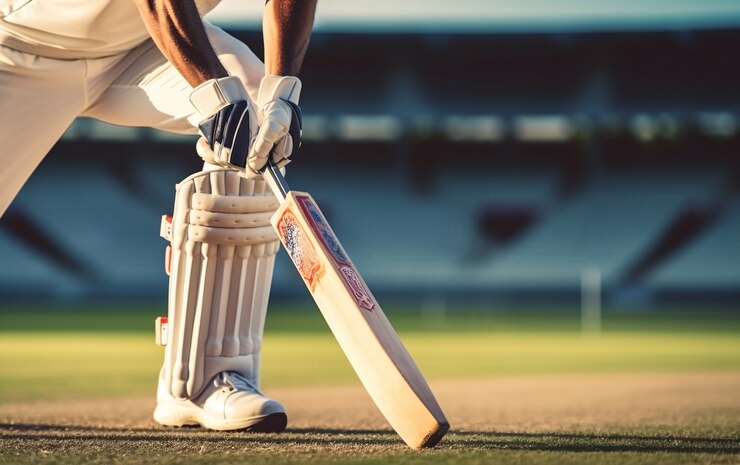Cricket, a game adored by millions across the globe, is not just a test of skill and strategy but also a rigorous examination of physical endurance and resilience. Injuries are an inevitable part of a cricketer’s life, and their careers often hinge on how effectively they recover and rehabilitate from these setbacks. From minor strains to career-threatening injuries, the journey to full recovery is filled with challenges. However, with the right approach to rehabilitation, many cricketers have successfully bounced back and returned to the field stronger than ever. In this blog, we will explore the processes and techniques cricketers use to recover from injuries and highlight the role of advanced technology, such as Laser247, in enhancing recovery outcomes.
Understanding Common Injuries in Cricket
Cricket is a dynamic sport involving various movements, such as sprinting, jumping, throwing, and sudden directional changes. These actions can lead to a range of injuries, from muscle strains and ligament tears to fractures and concussions. Fast bowlers, for instance, are particularly prone to stress fractures in the lower back, while batsmen often suffer from hamstring strains and shoulder injuries due to the repetitive nature of their actions. Fielders, especially those in high-pressure positions, are susceptible to injuries like dislocated shoulders and broken fingers.
The nature of cricket injuries requires a comprehensive and well-structured rehabilitation program tailored to the specific demands of the sport. The primary goal of these programs is not just to heal the injured tissue but also to restore the player’s full function and ensure they can perform at their best upon return. This process often involves a combination of physiotherapy, strength training, conditioning, and, in recent times, advanced recovery techniques such as those offered by platforms like Play99exch.
The Rehabilitation Process: A Multi-Phased Approach
Rehabilitation for cricketers typically follows a multi-phased approach, each tailored to the specific type of injury and the individual player’s needs. The first phase focuses on pain management and inflammation control. During this stage, rest is crucial, allowing the injured area to begin the healing process without further strain. Cryotherapy, ultrasound therapy, and anti-inflammatory medications are often employed to reduce pain and swelling.
Once the initial pain subsides, the focus shifts to restoring the range of motion and flexibility. Physiotherapists play a critical role during this phase, guiding players through specific exercises designed to stretch and strengthen the injured muscles and ligaments. Techniques like soft tissue mobilization, dry needling, and myofascial release are also commonly used to enhance mobility and prevent scar tissue formation.
The third phase involves strength training and conditioning, which are crucial for restoring the player’s physical fitness and preventing future injuries. This phase is highly individualized, with training regimens tailored to the player’s role on the field. For example, a fast bowler recovering from a back injury would focus on core strengthening and spine stabilization exercises, while a batsman recovering from a shoulder injury would engage in targeted shoulder and upper body workouts.
During this phase, modern rehabilitation platforms such as Play99exch offer a range of virtual training programs, providing players with tailored workouts and recovery routines that they can follow even when not at the training facility. Such platforms have become invaluable, particularly during the pandemic, enabling cricketers to continue their rehabilitation without interruption.
Psychological Aspects of Recovery
While physical rehabilitation is a significant aspect of recovery, the psychological impact of injuries on cricketers cannot be overlooked. The mental and emotional toll of being sidelined, coupled with the fear of re-injury and anxiety about career prospects, can be substantial. For many cricketers, the road to recovery involves not only overcoming physical challenges but also rebuilding mental strength and confidence.
Sports psychologists play a crucial role in this aspect of rehabilitation, helping cricketers manage stress, set realistic goals, and maintain a positive mindset throughout the recovery process. Techniques such as visualization, mindfulness meditation, and cognitive-behavioral therapy (CBT) are commonly employed to help players regain their confidence and prepare mentally for their return to the field.
Teams and franchises also provide strong support systems, ensuring players have access to mental health professionals, nutritionists, and recovery specialists. This holistic approach helps cricketers cope with the mental strain of injuries and fosters a positive recovery environment.
The Role of Technology in Rehabilitation
Advancements in sports science and technology have revolutionized the way cricketers recover from injuries. Technologies such as biomechanics, motion analysis, and wearable devices provide detailed insights into a player’s movement patterns, helping to identify the root cause of injuries and prevent future occurrences. Additionally, tools like GPS trackers and heart rate monitors allow coaches and physiotherapists to closely monitor a player’s recovery progress and adjust their rehabilitation program accordingly.
One of the latest technological innovations in sports recovery is the use of laser therapy, a technique that has gained popularity in recent years for its ability to accelerate healing and reduce recovery time. Platforms like Laser247 have been at the forefront of this revolution, offering cutting-edge laser therapy solutions that help cricketers recover faster from injuries. Laser therapy works by using specific wavelengths of light to penetrate deep into the tissues, promoting cellular repair and reducing inflammation. This non-invasive treatment is particularly beneficial for treating soft tissue injuries and managing pain, allowing cricketers to resume training and return to play sooner.
Success Stories of Cricketers Bouncing Back from Injuries
Numerous cricketers have demonstrated incredible resilience and determination in their recovery journeys, serving as inspiration to fans and fellow athletes alike. For example, Australian fast bowler Pat Cummins suffered a series of stress fractures early in his career that kept him out of action for nearly six years. Through a meticulous rehabilitation program, which included strength training, physiotherapy, and guided recovery strategies, Cummins made a triumphant return to international cricket, becoming one of the world’s leading fast bowlers.
Similarly, Indian cricketer Hardik Pandya faced a major back injury that threatened to derail his career. However, with a combination of surgical intervention, rigorous rehabilitation, and mental fortitude, he returned to the field stronger than ever, showcasing his all-round skills in various formats of the game.
These stories highlight the importance of a well-rounded recovery approach that incorporates both physical and psychological aspects, alongside the utilization of modern technology and support systems like those provided by Lotus365.
Conclusion
Injuries are an inevitable part of a cricketer’s journey, but they do not have to mark the end of a career. With advancements in sports science, technology, and a comprehensive approach to rehabilitation, many cricketers have successfully bounced back from injuries, often returning to the field stronger and more resilient than before. The use of platforms like Laser247and Play99exch has further enhanced recovery strategies, providing cricketers with the tools and support they need to overcome challenges and achieve their full potential. As the game continues to evolve, so too will the methods and technologies used to support cricketers in their pursuit of excellence, ensuring they remain at the peak of their performance for years to come.
Read Also:

